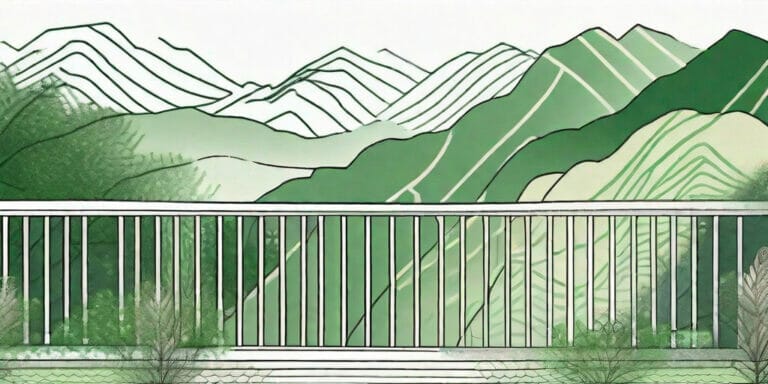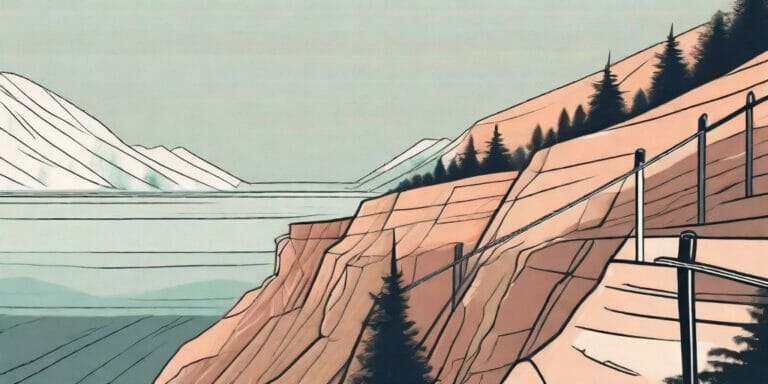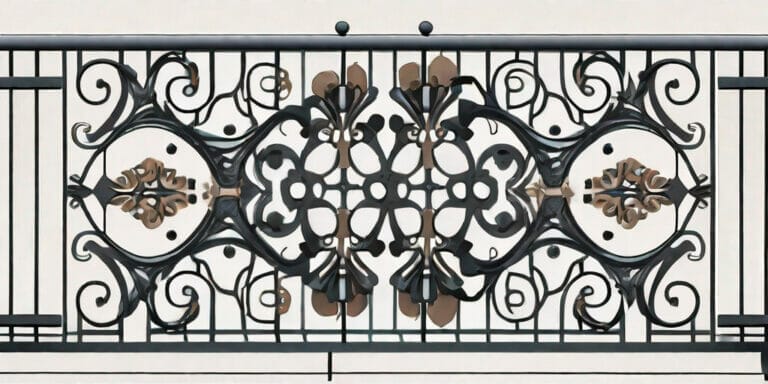When it comes to home design, every detail counts. From the color of the walls to the furniture choices, each element contributes to the overall aesthetic of your space. One often overlooked feature that can make a significant impact on the look and feel of your home is the baluster. Many people may not even be familiar with the term, but once you understand the basics of a baluster, you’ll see how it can enhance your home in both practical and aesthetic ways.
Understanding the Basics of a Baluster
A baluster is a vertical support used in architecture and construction. It is typically found on staircases, balconies, and other areas where there is a need for a barrier or railing. Balusters are often made of materials such as wood, metal, or stone and can be decorative or simple in design. They serve both functional and decorative purposes, providing support and safety while also adding visual interest to a space.
When it comes to architectural elements, balusters play a crucial role in maintaining the structural integrity of a building. They provide stability and support, preventing accidents and ensuring the safety of those who use the stairs or walk along the balcony. Without balusters, these areas would be exposed and potentially dangerous.
But balusters are not just functional; they also contribute to the overall aesthetic appeal of a space. With their various designs and materials, balusters can enhance the style and character of a building. Whether it’s a classic wooden baluster in a Victorian-era home or a sleek glass baluster in a modern apartment, these architectural features add personality and charm to any space.
Definition of a Baluster
So what exactly is a baluster? In architectural terms, a baluster is a small column or pillar that supports the handrail of a staircase or the top rail of a balcony. It is usually slender and vertical in shape, resembling a miniature column. Balusters are typically installed at regular intervals along the handrail or top rail, creating a visually pleasing pattern.
When it comes to the design of a baluster, the possibilities are endless. From intricate carvings to sleek and minimalist shapes, balusters can be customized to suit any architectural style. The choice of material also plays a significant role in the overall look and feel of a baluster. Wood balusters exude warmth and elegance, while metal balusters convey a sense of modernity and strength. Stone balusters, on the other hand, add a touch of grandeur and timelessness to a space.
Historical Background of Balusters
The use of balusters in architectural design has a rich history that dates back centuries. Ancient civilizations, such as the Greeks and Romans, were among the first to incorporate balusters into their architectural designs. These early balusters were often made of stone and featured intricate carvings and patterns.
In medieval Europe, balusters became a staple in the construction of castles, cathedrals, and other grand buildings. They were not only functional but also served as a symbol of wealth and power. The Gothic period saw the rise of elaborate and ornate balusters, with intricate details and delicate craftsmanship.
As architectural styles evolved over time, so did the design and materials used for balusters. The Renaissance brought about a resurgence of classical elements, with balusters taking on a more restrained and refined appearance. In the Baroque and Rococo periods, balusters became even more ornate and extravagant, reflecting the opulence and grandeur of the time.
Different Types of Balusters
Balusters come in a wide variety of styles, allowing you to choose the one that best complements your home’s overall design. Some popular types of balusters include:
- Spindle Balusters: These are simple and understated, typically made from wood or metal, and often used in traditional or minimalist designs. They provide a clean and timeless look, perfect for those who prefer a classic aesthetic.
- Twisted Balusters: These balusters feature a spiraling or twisting design, adding a touch of elegance and sophistication to a space. The intricate twists create a visually captivating effect, making them a popular choice for those seeking a more decorative element.
- Gothic Balusters: These balusters have intricate, ornate details reminiscent of Gothic architecture, perfect for adding a dramatic flair to your home. With their pointed arches and delicate tracery, Gothic balusters exude a sense of mystery and romance.
- Square Balusters: These are contemporary and modern in style, with a simple, geometric shape that creates a minimalist look. Square balusters are often made of metal or glass, adding a sleek and clean aesthetic to any space.
- Glass Balusters: These balusters are made entirely of glass or feature glass panels, providing a sleek and modern aesthetic. Glass balusters are perfect for those who want to maximize natural light and create an open and airy feel in their home.
Choosing the right type of baluster for your home is essential in creating the desired atmosphere and style. Whether you prefer a traditional, ornate look or a contemporary, minimalist design, there is a baluster out there that will perfectly suit your taste and enhance the overall beauty of your space.
The Role of Balusters in Home Design
Now that you have a better understanding of what balusters are, let’s explore how they can enhance your home design in different ways.
Balusters in Staircase Design
Staircases are often a focal point in a home’s interior, and balusters play a crucial role in their design. The choice of balusters can completely transform the look and feel of your staircase. For a more traditional or formal look, wooden balusters with intricate carving or detailing can add an elegant touch. On the other hand, sleek metal or glass balusters can create a more modern and contemporary look. The size and spacing of the balusters also play a role in the overall aesthetic of the staircase, so it’s essential to consider these factors when choosing your balusters.
Balusters in Balcony Design
If your home has a balcony, balusters are essential for safety purposes. However, they can also be a decorative element that adds charm and character to your exterior space. Depending on the architectural style of your home, you can choose balusters that align with the overall design theme. For a more traditional look, wooden or wrought iron balusters can give your balcony a timeless appeal. Alternatively, if you prefer a more modern look, consider using metal or glass balusters that create a sleek and open feel.
Balusters in Outdoor Spaces
Balusters are not limited to interior spaces. They can also be used to enhance the design of outdoor areas, such as patios, decks, and garden paths. The choice of materials for outdoor balusters is crucial as they need to withstand weather elements. Wooden balusters treated for outdoor use can create a warm and inviting atmosphere, while metal or stone balusters can provide a more durable and low-maintenance option. Consider the style and ambiance you want to create in your outdoor spaces when selecting balusters.
Material Choices for Balusters
When it comes to balusters, there is a wide range of materials to choose from. Each material offers its unique advantages and can contribute to the overall look and feel of your home.
Wooden Balusters
Wood is a classic choice for balusters, offering warmth and natural beauty. It is versatile and can be shaped and carved into intricate designs. Wooden balusters are often used in traditional or rustic style homes, adding a timeless appeal to the space. However, it’s important to note that wood requires regular maintenance to keep it in good condition.
Metal Balusters
Metal balusters are a popular choice for modern and contemporary homes. They offer a sleek and clean look and can be combined with other materials such as glass or wood for added visual interest. Metal balusters are also incredibly durable and low maintenance, making them a practical choice for both indoor and outdoor use.
Stone Balusters
For a more luxurious and elegant look, stone balusters can be a great choice. Stone balusters can be made from various types of stone, such as marble or granite, offering a timeless and sophisticated aesthetic. However, it’s worth noting that stone balusters can be more expensive and may require professional installation due to their weight.
How to Choose the Right Baluster for Your Home
Now that you have a good understanding of balusters and their role in home design, it’s time to consider how to choose the right ones for your specific needs and preferences.
Considering the Architectural Style of Your Home
When selecting balusters, it’s essential to consider the architectural style of your home. Choose balusters that complement the existing design elements and overall aesthetic. For example, if you have a Victorian-style home, ornate and decorative balusters can enhance the period charm. On the other hand, if you have a modern or minimalist home, sleek and simple balusters will create a cohesive look.
Baluster Size and Spacing
The size and spacing of the balusters can have a significant impact on the overall appearance of your staircase or balcony railing. Balusters that are too small or too closely spaced can look crowded and busy, while those that are too large or spaced too far apart can appear sparse. Finding the right balance is crucial to achieving an aesthetically pleasing result.
Safety Considerations
While the aesthetic appeal of balusters is important, safety should always be a top priority. Ensure that the balusters you choose are sturdy and meet local safety codes. Balusters should be able to withstand pressure and provide a secure barrier to prevent accidents and falls.
As you can see, balusters are much more than just functional elements in home design. They have the power to enhance the overall aesthetics of your space, adding character, style, and safety. Whether you’re renovating an existing home or building a new one, considering balusters as part of your design will elevate your home to a whole new level of beauty and sophistication.






